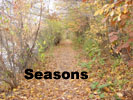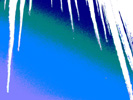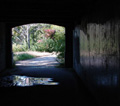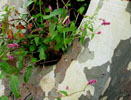Professor
Anne Whiston Spirn; Course: Sites In Sight: Photography as Inquiry,
MIT
Photo
Essay by: Mike Houck, Loeb Fellow
Director, Urban Greenspaces Institute and
Urban Naturalist for Portland Audubon Society, Oregon
An appropriate twenty-first century corollary to Thoreau's aphorism,
"In wildness is the preservation of the world" should be:
In livable cities is preservation of the wild. Unless cities
are made desirable, more livable places in which to live, the trend
toward land-consuming and headwaters-destroying suburbanization and
urban sprawl will continue. To be truly livable, however, the city's
built environment must be fully integrated with a vibrant urban greenfrastructure:
streams, wetlands, rivers, forests and an interconnected system of
recreational trails. The Boston region has worked to achieve such
integration beginning with Charles Eliot and Sylvester Baxter who,
in 1893, advocated for the creation of an Emerald Metropolis,
a vision based first and foremost on protecting the region's
most distinctive natural features, "the rock hills, the stream
banks, and the bay and the sea shores."
The
primary focus of Sites in Sight was to produce a photodocumentary
of a site of our chosing, and to first let the landscape speak for
itself through poetics, significant detail, and light. Later, our
task was to create, through photography and use of our personal journal
observations, a site essay. My site, one reach of the lower Charles
River, covers about two river miles between the Arsenal and Larz Anderson
bridges. It was impossible, however, to describe my reach absent a
broader spatial and historical context. Therefore, the essay includes
both a brief historical perspective and pictorial journey from the
literal "head of the Charles" to the Back Bay Fens. Head
of the Charles to Hell's Half Acre also includes my initial,
admittedly limited, perceptions of the lower Charles as a recreational,
aesthetic, and ecological resource. As with the Willamette River Greenway
in my hometown of Portland, Oregon, popular myth about the extent
and completeness of the greenway overshadows the reality. Similarly,
it's my outsider's perspective that much work remains before the lower
Charles River attains its full potential as an urban greenspace that
equally serves the needs of people and nature, one that realizes Charles
Eliot's and Sylvester Baxter's vision.

































